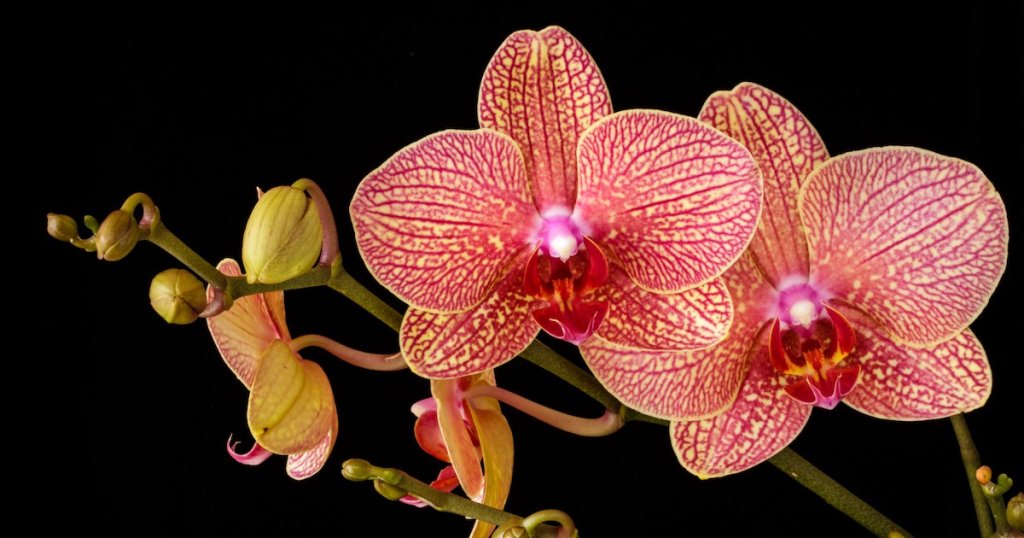Flowers impress people with their colorful and graceful nature, often becoming the main focus in landscape photography, complementing the overall composition. Capturing these appealing objects is a good skill practice for aspiring photographers who also want to compile diverse portfolios. Plants stay motionless during photoshoots in windless weather, which significantly simplifies the process.
Nonetheless, taking professional, high-quality nature pictures requires basic photography skills, time to find an appropriate angle, and specialized equipment. Keep reading to discover useful tips and flower photography basics in this article.
What equipment do you need for shooting flowers?
Before photographing flowers, you should learn more about professional photography equipment and their purpose. There are different lens types; some of them are perfect for capturing wider shots, while others provide powerful zooming. Close-focus lenses with life-size reproduction ratios are one of the best options for shooting flowers. Equipment like this allows photographers to create well-defined, close-up, and detailed compositions.
You can also require additional, helpful equipment. For example, a tripod allows you to stabilize a camera and take long-exposure shots. Wimberley Plamp helps hold different subjects at a distance motionless; it can be especially useful for shooting in windy weather. Make sure to get the needed equipment before getting to your location and starting the photoshoot.
How to photograph a flower
Before starting with flower photography, study the essential lighting and composition photography rules, and explore various shooting techniques to ensure a basic understanding of the process.
Change your point of view
Most beginner photographers capture flowers at eye level, making an overall composition primitive and uninteresting. Changing perspective helps you uncover extraordinary angles and seize dynamic scenes.
Experiment with different angles, e.g., hold a camera on your knees or lay down on the grass. Moreover, consider general landscape features when choosing the proper point of view. Even the smallest details captured in the photo can add creativity and dynamics to the overall composition.
Macro focus on a flower
The beauty of flowers can be lost when combined with detailed backgrounds. The environment often includes unnecessary elements and unappealing scenery, distracting viewers from main objects in the picture. You can highlight a flower’s elegance using macro lenses.
Just focus your camera on the main object and blur the background. This way, you can capture raindrops, pollen, and unique-looking petals, bringing more drama and sophistication to your photography.
Shoot in windless weather
Weather conditions play a crucial role in photoshoot arrangements. When capturing flower pictures, the wind is one of the most distracting and determining variables. It can simply shake up plants which leads to defocusing. You should be aware of weather conditions to take impressive shots—check the forecast in advance. Nonetheless, if windy weather catches you at work, make an improvised block from available items like reflectors or umbrellas.
Form compositional harmony
There are different approaches to capturing nature. You can focus on various elements or create unique accents in your shots. However, a single flower can look dull in the overall composition. Scenes like this are perceived as a little detached from reality. You can make impressive storylines by adding extra surrounding elements to your frames, e.g., water, insects, or the sky.
Manage lighting
Depending on the weather, flowers can be covered with shadows which ruins the visual. Although photographers can’t control environmental conditions, they can deal with them using artificial light sources.
Utilizing strobe lights and reflectors, you can illuminate the picture and brighten object colors. You can also try a backlighting technique; it creates an impressive shining effect that highlights soft shades and makes your scenery more dramatic.
Play with sun rays
You can use natural sunlight to experiment with compositional perception. For example, create an impressive starburst effect by placing flowers between your camera and the sun. This way, you can capture sparkles on the plant’s petals. This technique is especially beneficial when you photograph sunflowers.
How can you benefit from flower photography?
You can sell professional flower photos on stock content marketplaces. On these platforms, creators from all over the world share their works and get passive income from selling demanded pictures. In addition to taking photographs, you can create floral illustrations, icons, and patterns—popular design materials.
Depositphotos is an international stock content marketplace working with 100,000 creators from 173 countries. The online library features 230+ million HD photos, vectors, illustrations, patterns, clip art, music tracks, sound effects, and videos. All files are copyrighted and offered to the users under a Royalty-Free License.
Beginner, amateur, and professional photographers can sell their visuals on the platform—Depositphotos has beginner-friendly, flexible requirements for its contributors. All you need is to be 18 years old and pass an uncomplicated exam to present your skills and understanding of basic compositional rules.
Just upload up to five of your best images and wait for confirmation. While waiting, browse https://depositphotos.com to explore the library’s visuals and learn how you can best attract users to your files. Moreover, you can determine new ideas for future flower photoshoots.
Conclusion
Capturing flowers is excellent practice for beginner photographers. Using basic techniques, you can experiment with angles, contrast, lighting, and compositional elements and learn how to deal with windy weather. Nature photography is also about free expression and creativity. Gather inspirational ideas, take the best flower photos, and sell your HD visuals on stock content marketplaces.

